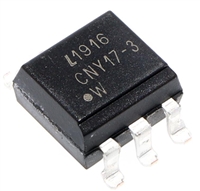| 是否Rohs认证: | 不符合 | 生命周期: | Transferred |
| 包装说明: | 0.300 INCH, PLASTIC, SOIC-16 | Reach Compliance Code: | unknown |
| 风险等级: | 5.71 | Is Samacsys: | N |
| 最大时钟频率: | 0.032 MHz | 信息访问方法: | I2C |
| 中断能力: | Y | JESD-30 代码: | R-PDSO-G16 |
| JESD-609代码: | e0 | 长度: | 10.35 mm |
| 端子数量: | 16 | 计时器数量: | 1 |
| 最高工作温度: | 85 °C | 最低工作温度: | -40 °C |
| 封装主体材料: | PLASTIC/EPOXY | 封装代码: | SOP |
| 封装等效代码: | SOP16,.4 | 封装形状: | RECTANGULAR |
| 封装形式: | SMALL OUTLINE | 电源: | 5 V |
| 认证状态: | Not Qualified | 座面最大高度: | 2.65 mm |
| 子类别: | Timer or RTC | 最大供电电压: | 5.5 V |
| 最小供电电压: | 4.5 V | 标称供电电压: | 5 V |
| 表面贴装: | YES | 技术: | CMOS |
| 温度等级: | INDUSTRIAL | 端子面层: | Tin/Lead (Sn/Pb) |
| 端子形式: | GULL WING | 端子节距: | 1.27 mm |
| 端子位置: | DUAL | 最短时间: | 1/100 SECOND |
| 易失性: | YES | 宽度: | 7.5 mm |
| uPs/uCs/外围集成电路类型: | TIMER, REAL TIME CLOCK | Base Number Matches: | 1 |
| 型号 | 品牌 | 获取价格 | 描述 | 数据表 |
| X1288S16I-2.7 | XICOR |
获取价格 |
2-Wire RTC Real Time Clock/Calendar/CPU Supervisor with EEPROM |

|
| X1288S16I-2.7 | INTERSIL |
获取价格 |
2-Wire⑩ RTC Real Time Clock/Calendar/CPU Supe |

|
| X1288S16I-2.7A | INTERSIL |
获取价格 |
2-Wire⑩ RTC Real Time Clock/Calendar/CPU Supe |

|
| X1288S16I-2.7A | XICOR |
获取价格 |
2-Wire RTC Real Time Clock/Calendar/CPU Supervisor with EEPROM |

|
| X1288S16I-2.7AT1 | RENESAS |
获取价格 |
1 TIMER(S), REAL TIME CLOCK, PDSO16, 0.300 INCH, PLASTIC, SOIC-16 |

|
| X1288S16I-2.7T1 | RENESAS |
获取价格 |
1 TIMER(S), REAL TIME CLOCK, PDSO16, 0.300 INCH, PLASTIC, SOIC-16 |

|
| X1288S16I-4.5A | INTERSIL |
获取价格 |
2-Wire⑩ RTC Real Time Clock/Calendar/CPU Supe |

|
| X1288S16I-4.5A | XICOR |
获取价格 |
2-Wire RTC Real Time Clock/Calendar/CPU Supervisor with EEPROM |

|
| X1288S16IT1 | RENESAS |
获取价格 |
1 TIMER(S), REAL TIME CLOCK, PDSO16, 0.300 INCH, PLASTIC, SOIC-16 |

|
| X1288V14 | INTERSIL |
获取价格 |
2-Wire⑩ RTC Real Time Clock/Calendar/CPU Supe |

|
 压敏电阻器在直流电路中的过压保护应用探讨
压敏电阻器在直流电路中的过压保护应用探讨

 电感耐压值及其与电感大小的关系
电感耐压值及其与电感大小的关系

 CNY17F光耦合器:特性、应用、封装、引脚功能及替换型号解析
CNY17F光耦合器:特性、应用、封装、引脚功能及替换型号解析

 DS1307资料解析:特性、引脚说明、替代推荐
DS1307资料解析:特性、引脚说明、替代推荐
